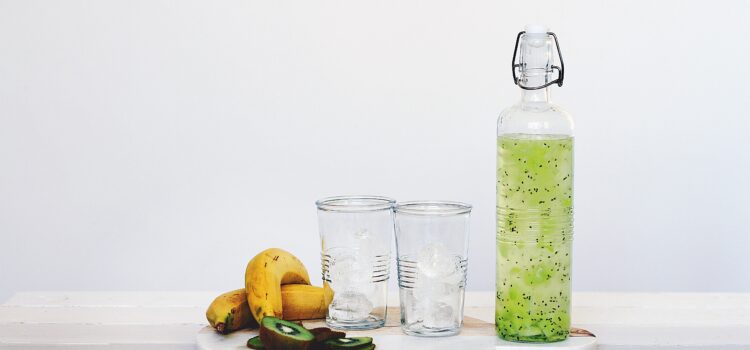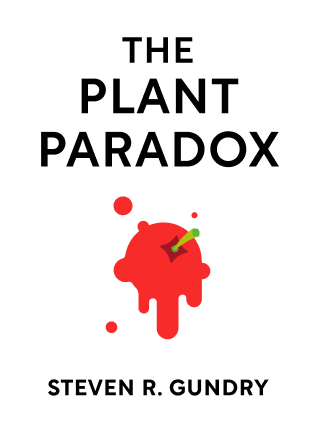

This article is an excerpt from the Shortform summary of "The Plant Paradox" by Steven R. Gundry. Shortform has the world's best summaries of books you should be reading.
Like this article? Sign up for a free trial here .
What is the Plant Paradox diet? How does the Plant Paradox Program work?
The Plant Paradox diet is a program that focuses on avoiding the wrong types of food and eating the right types. The purpose is to avoid the potentially harmful effects of lectins.
Read about the four rules of the Plant Paradox Program and the three phases of the Plant Paradox diet.
Rules of the Program
The Plant Paradox Program is based on four rules:
- What you don’t eat makes a bigger impact than what you do eat.
- Take care of your gut microbes and they’ll take care of you.
- Your body processes fruit like candy.
- You are what you eat—and what the thing you’re eating ate.
Unlike other diets, the Plant Paradox diet doesn’t ask you to count calories. Instead, you can eat much more food—as long as it’s the right foods—and lose weight.
Here’s an overview of the Plant Paradox Diet’s three phases.
Phase 1: Three-Day Cleanse
Phase 1 of the Plant Paradox diet is an optional three-day cleanse designed to starve the bad bacteria and put your gut in the best condition for Phase 2. Think of it as weeding and preparing the soil before you plant new crops; a damaged gut doesn’t reap all the benefits possible from good foods.
The cleanse has three components:
- Foods to eat and avoid: Lectin-heavy foods like corn and grain are off-limits, as well as sugar, fruits, and dairy. You can eat organic vegetables such as asparagus, any from the cabbage family, and greens. You can have 8 ounces of protein a day—either pastured chicken, wild-caught fish, hemp tofu, or grain-free tempeh. Certain oils are approved (e.g. extra-virgin olive oil and coconut oil), and drinks are limited to water, coffee, and tea.
- Laxative: You have the option of taking a laxative called Swiss Kriss, or something comparable, the night before the cleanse to clear things out and start with a clean slate to kick-start your results.
- Supplements: You can take optional supplements such as grapefruit seed extract, mushroom extracts, and berberine to help kill harmful gut bacteria, fungi, and molds more quickly.
Phase 2: Six-Week Gut Repair
Phase 2 of the Plant Paradox diet will be at least six weeks, which is how long it’ll take to cement your new eating habits and start to make significant progress on repairing your gut. After the six weeks, you can reintroduce certain lectin-containing food, or you can choose to continue in Phase 2 indefinitely.
Expect the first two weeks to be tough as you change your habits and potentially even experience some withdrawal symptoms from the foods you’ve eliminated; you may have low energy, muscle cramps, headaches, and irritability. But by the end of two weeks, you’ll start to see results.
You’ll eliminate:
- Whole grains
- Beans and legumes
- Peanuts and cashews
- Dairy products from cows unless they’re from Southern Europe
- Commercially raised meats
- Many fruits and seeded vegetables
- Oils made from lectin-containing foods, such as vegetable, corn, and peanut oil
- Artificial sweeteners
You’ll eat:
- Leafy greens, cruciferous, and other vegetables
- Resistant starches (e.g. plantains and parsnips)
- Nuts
- Non-cow dairy (e.g. goat, sheep, buffalo)
- Wild fish and grass-fed meat
- Limited fruits, including berries, cherries, and plums
- Certain oils, including perilla and walnut oil
You’ll also avoid disruptors like antibiotics and NSAIDs, and enhance your results with certain microbe-nourishing supplements.
Phase 3: Making The PPP Your Lifestyle
Once you’ve restored a healthy holobiome, you can reintroduce some lectin-containing foods in Phase 3—but if you’re particularly sensitive to lectins, you may not want to reintroduce them at all. Phase 3 of the Plant Paradox Program is meant to implement a lifestyle that you can maintain for the rest of your life.
In Phase 3 of the Plant Paradox diet, you’ll:
- Continue to eat all PPP-approved foods
- Continue to avoid most off-limits foods
- Reintroduce peeled and deseeded nightshade and squash vegetables, immature vegetables, pressure-cooked legumes, and Indian white basmati rice
- Increase your ketogenic fats, which are in MCT oil and coconut oil
- Eat less frequently and less food overall
- Reduce your animal protein intake to 2 ounces (or fewer) per day
- Try five days of a calorie-restricted vegan fast per month, regular intermittent fasting, or stretching the time between your meals
- Maintain your body’s internal clock by aiming to get an hour of daylight each day
- Avoid blue light in the evenings
The Ketogenic Plant Paradox Diet
If you have cancer, diabetes, Parkinson’s, Alzheimer’s, or other forms of dementia, you’ll benefit from the keto version of the PPP. These diseases are the result of your body’s inability to handle all the energy (food) you consume, so shifting the kind of food you eat helps your body rebalance.
The keto program cuts sugar intake (including sugar from animal protein) in order to reduce your insulin production while raising your fat intake to help your body begin burning ketones—a special kind of fat—for energy instead of sugar. The fat intake will be from ketone-heavy sources like MCT oil, coconut oil, palm fruit oil, and ghee.
You’ll also
- Limit animal protein to 2-4 ounces per day
- Eliminate all fruits except avocados, unripe mangoes, unripe papayas, green bananas, and plantains
- Eliminate all seeded vegetables except okra
- Have a tablespoon of MCT oil or coconut oil every few hours when doing intermittent fasting or stretching the time between meals

———End of Preview———
Like what you just read? Read the rest of the world's best summary of Steven R. Gundry's "The Plant Paradox" at Shortform .
Here's what you'll find in our full The Plant Paradox summary :
- Why eating more vegetables isn't enough, and why some vegetables are toxic to your body
- The science behind lectins and how they tear apart your body, making you fat and sick
- The 6-week program to get your body back on healthy grack






